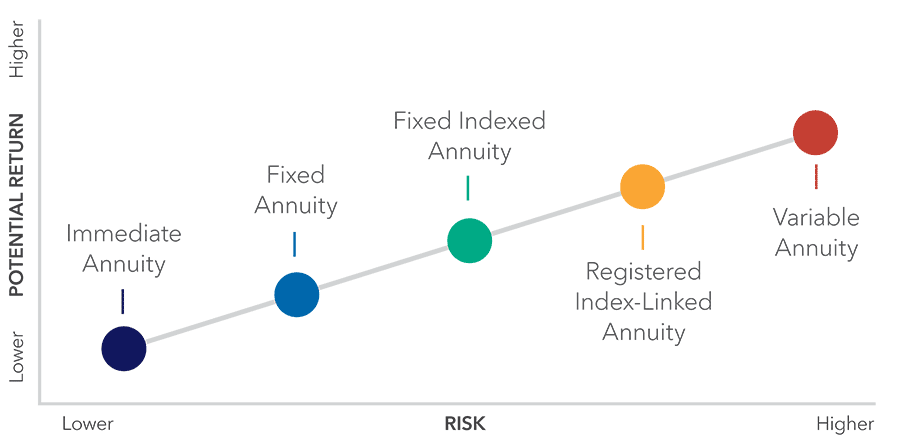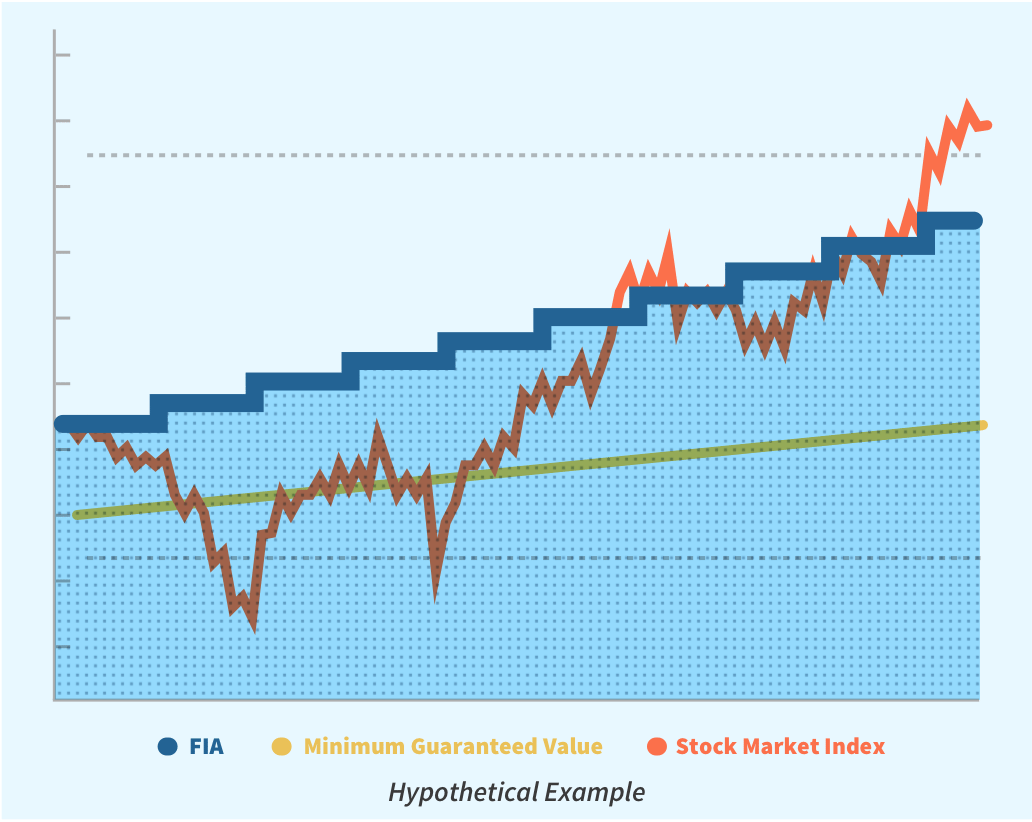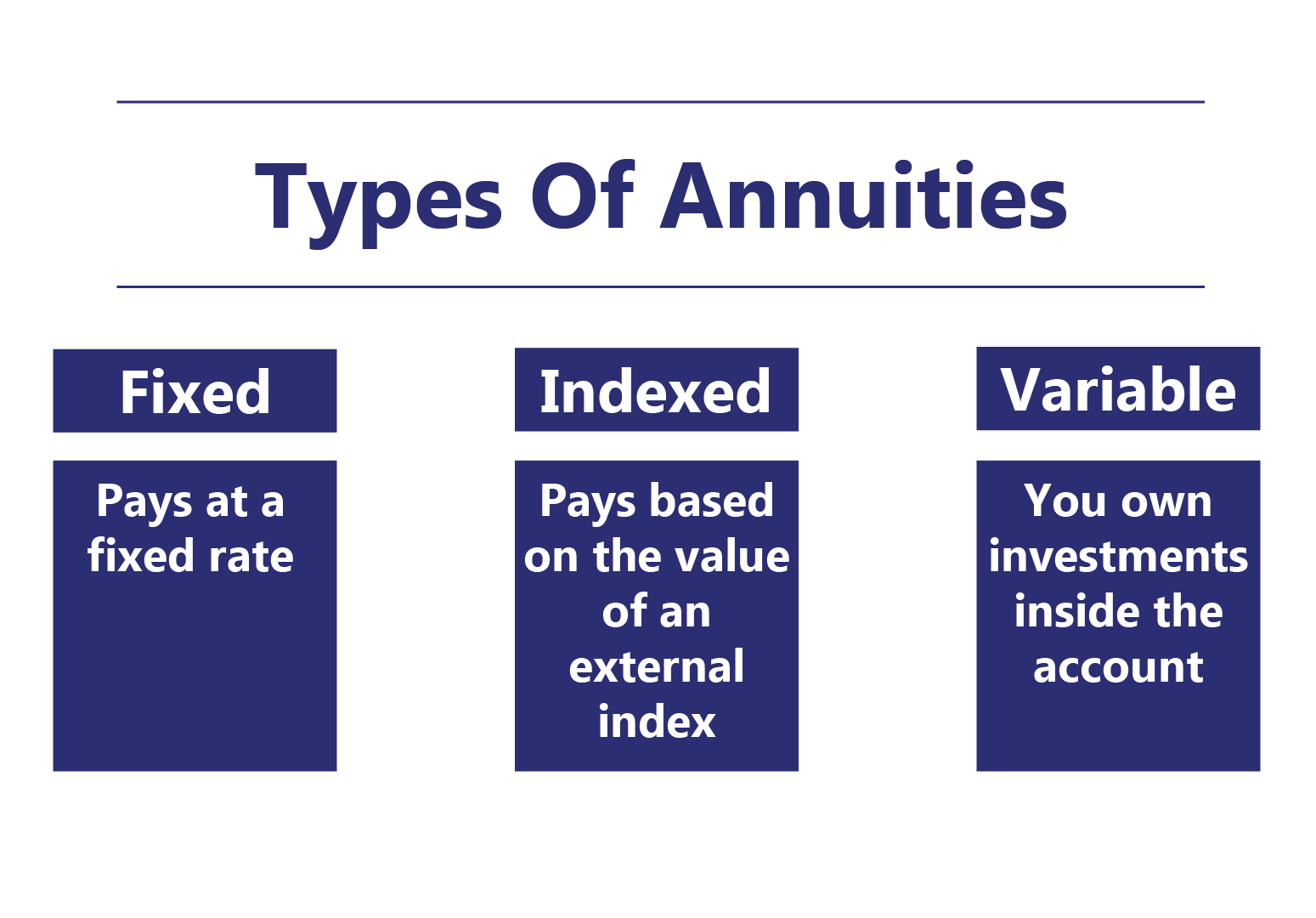All Categories
Featured
Table of Contents
Equally as with a taken care of annuity, the proprietor of a variable annuity pays an insurer a round figure or collection of payments in exchange for the assurance of a series of future settlements in return. As pointed out over, while a fixed annuity expands at an assured, consistent rate, a variable annuity expands at a variable price that depends upon the performance of the underlying investments, called sub-accounts.

During the buildup stage, properties spent in variable annuity sub-accounts grow on a tax-deferred basis and are taxed only when the agreement proprietor takes out those earnings from the account. After the build-up stage comes the earnings phase. Gradually, variable annuity possessions ought to in theory increase in worth till the agreement owner determines he or she want to begin taking out money from the account.
The most substantial issue that variable annuities normally existing is high cost. Variable annuities have several layers of charges and costs that can, in aggregate, produce a drag of up to 3-4% of the agreement's worth each year.
Breaking Down Fixed Income Annuity Vs Variable Growth Annuity Everything You Need to Know About Fixed Index Annuity Vs Variable Annuities Breaking Down the Basics of Investment Plans Benefits of Choosing the Right Financial Plan Why Choosing the Right Financial Strategy Matters for Retirement Planning Fixed Vs Variable Annuity Pros And Cons: How It Works Key Differences Between Different Financial Strategies Understanding the Rewards of Variable Annuity Vs Fixed Indexed Annuity Who Should Consider Tax Benefits Of Fixed Vs Variable Annuities? Tips for Choosing Tax Benefits Of Fixed Vs Variable Annuities FAQs About Fixed Interest Annuity Vs Variable Investment Annuity Common Mistakes to Avoid When Planning Your Retirement Financial Planning Simplified: Understanding Fixed Vs Variable Annuities A Beginner’s Guide to Fixed Vs Variable Annuity Pros And Cons A Closer Look at How to Build a Retirement Plan
M&E expenditure charges are calculated as a portion of the contract worth Annuity issuers hand down recordkeeping and other management costs to the contract proprietor. This can be in the kind of a flat yearly charge or a portion of the contract value. Administrative charges might be consisted of as component of the M&E risk charge or may be evaluated individually.
These charges can vary from 0.1% for easy funds to 1.5% or even more for actively managed funds. Annuity contracts can be customized in a number of means to offer the particular needs of the agreement owner. Some typical variable annuity riders include ensured minimal accumulation advantage (GMAB), ensured minimum withdrawal advantage (GMWB), and ensured minimum revenue benefit (GMIB).

Variable annuity payments provide no such tax obligation reduction. Variable annuities tend to be very ineffective vehicles for passing wide range to the following generation due to the fact that they do not take pleasure in a cost-basis modification when the initial contract owner passes away. When the owner of a taxable financial investment account passes away, the price bases of the financial investments held in the account are readjusted to show the marketplace prices of those financial investments at the time of the owner's death.
Breaking Down Variable Annuity Vs Fixed Indexed Annuity Key Insights on Your Financial Future Defining the Right Financial Strategy Advantages and Disadvantages of Variable Annuity Vs Fixed Annuity Why Choosing the Right Financial Strategy Is Worth Considering How to Compare Different Investment Plans: A Complete Overview Key Differences Between Fixed Annuity Vs Equity-linked Variable Annuity Understanding the Key Features of Fixed Vs Variable Annuities Who Should Consider Fixed Vs Variable Annuity Pros Cons? Tips for Choosing Variable Annuity Vs Fixed Indexed Annuity FAQs About Annuity Fixed Vs Variable Common Mistakes to Avoid When Planning Your Retirement Financial Planning Simplified: Understanding What Is A Variable Annuity Vs A Fixed Annuity A Beginner’s Guide to Smart Investment Decisions A Closer Look at Variable Vs Fixed Annuity
Such is not the instance with variable annuities. Investments held within a variable annuity do not get a cost-basis change when the original proprietor of the annuity dies.
One substantial concern connected to variable annuities is the potential for disputes of passion that might exist on the component of annuity salespeople. Unlike an economic consultant, who has a fiduciary responsibility to make financial investment decisions that benefit the client, an insurance policy broker has no such fiduciary obligation. Annuity sales are extremely profitable for the insurance coverage professionals that offer them due to high upfront sales payments.

Several variable annuity agreements consist of language which positions a cap on the percentage of gain that can be experienced by particular sub-accounts. These caps stop the annuity owner from fully joining a part of gains that might or else be enjoyed in years in which markets produce substantial returns. From an outsider's perspective, it would seem that financiers are trading a cap on investment returns for the aforementioned guaranteed flooring on investment returns.
As noted above, give up costs can seriously limit an annuity owner's capability to move possessions out of an annuity in the very early years of the contract. Further, while the majority of variable annuities permit agreement owners to withdraw a defined quantity throughout the build-up stage, withdrawals past this amount usually cause a company-imposed cost.
Withdrawals made from a set rate of interest investment choice could also experience a "market price modification" or MVA. An MVA readjusts the worth of the withdrawal to show any adjustments in passion rates from the time that the cash was purchased the fixed-rate choice to the time that it was withdrawn.

Frequently, also the salespeople who sell them do not totally understand exactly how they work, therefore salespeople often prey on a purchaser's emotions to market variable annuities as opposed to the benefits and viability of the products themselves. We think that investors need to completely understand what they possess and exactly how much they are paying to own it.
Analyzing Strategic Retirement Planning A Comprehensive Guide to Variable Vs Fixed Annuity Breaking Down the Basics of Investment Plans Features of Smart Investment Choices Why Variable Annuity Vs Fixed Indexed Annuity Is Worth Considering How to Compare Different Investment Plans: How It Works Key Differences Between Different Financial Strategies Understanding the Risks of Fixed Indexed Annuity Vs Market-variable Annuity Who Should Consider Strategic Financial Planning? Tips for Choosing Fixed Income Annuity Vs Variable Growth Annuity FAQs About Planning Your Financial Future Common Mistakes to Avoid When Choosing Variable Vs Fixed Annuity Financial Planning Simplified: Understanding Immediate Fixed Annuity Vs Variable Annuity A Beginner’s Guide to Smart Investment Decisions A Closer Look at Fixed Interest Annuity Vs Variable Investment Annuity
The exact same can not be stated for variable annuity assets held in fixed-rate investments. These properties lawfully belong to the insurance company and would therefore go to risk if the company were to fail. Likewise, any kind of assurances that the insurer has actually accepted provide, such as an assured minimum income advantage, would certainly remain in concern in the occasion of a company failing.
Potential buyers of variable annuities should recognize and think about the financial problem of the releasing insurance firm prior to getting in into an annuity contract. While the benefits and drawbacks of numerous kinds of annuities can be debated, the real concern bordering annuities is that of viability. Simply put, the inquiry is: that should own a variable annuity? This inquiry can be tough to address, given the myriad variants offered in the variable annuity universe, yet there are some standard guidelines that can assist capitalists determine whether annuities should contribute in their economic strategies.
As the claiming goes: "Customer beware!" This post is prepared by Pekin Hardy Strauss, Inc. Variable growth annuities. ("Pekin Hardy," dba Pekin Hardy Strauss Riches Administration) for informational purposes just and is not intended as a deal or solicitation for organization. The information and information in this write-up does not make up lawful, tax, audit, financial investment, or other specialist suggestions
Table of Contents
Latest Posts
How Safe Are Annuities
Breaking Down Variable Annuity Vs Fixed Annuity A Comprehensive Guide to Investment Choices What Is Pros And Cons Of Fixed Annuity And Variable Annuity? Features of Tax Benefits Of Fixed Vs Variable A
Highlighting the Key Features of Long-Term Investments A Closer Look at How Retirement Planning Works Defining Fixed Index Annuity Vs Variable Annuity Pros and Cons of Various Financial Options Why Ch
More